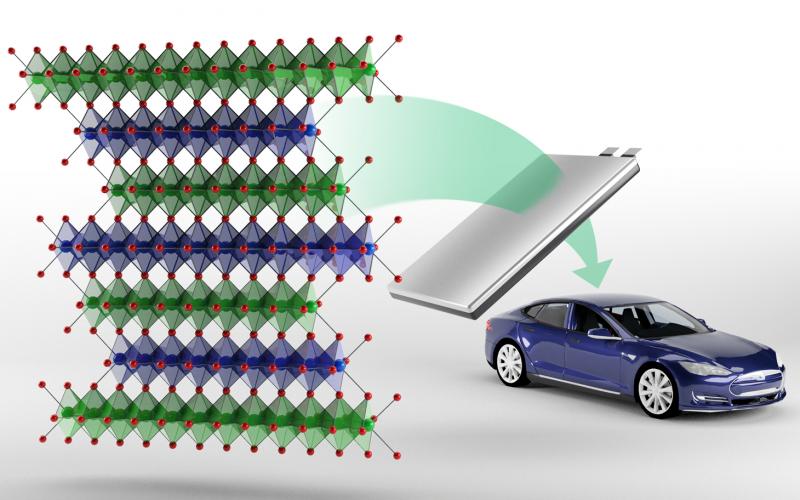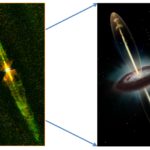(New class of cobalt-free cathodes could enhance energy density of next-gen lithium-ion batteries)
2020/12/18 アメリカ合衆国・オークリッジ国立研究所(ORNL)

・ ORNL が、リチウムイオン電池の高コストなコバルトベースのカソードの代替となる可能性を提供する、ニッケル、 鉄 、アルミニウムを使用した新タイプの NFA カソードを開発。
・ ニッケル酸リチウムをベースとした新しいカソードとして、高速充電、高エネルギー密度、優れたコスト効果と長寿命の実現が期待できる。ポータブルな電子機器や EV の世界的な生産増加に伴い、リチウムオン電池の需要が高まっており、道路を走行する EV は 2030 年までに 1 億台を超えると予測されている。
・ コバルトは、リチウムイオン電池のコストの大部分を占めるカソードに必要な希少金属で、海外での採掘への依存がその確保とカソードの生産を困難にしている。コバルトの代替としてコスト効果的に製造できる材料の発見は、リチウムイオン電池の研究開発における優先事項となっている。
・ ニッケル酸リチウムは、カソード材料候補として長らく研究されているが、構造的・電気学的な不安定性が課題であった。今回の研究では、いくらかのニッケルを鉄とアルミニウムに置き換えることでカソードの安定性を強化。鉄とアルミニウムは、コスト効果的なサステナブルで環境負荷の少ない材料。
・ 中性子回折やメスバウアー分光法等の高度な特性化技術を通じて NFA の原子・ミクロ構造と電気化学的特性を調査した結果、充放電時の NFA カソードの挙動がコバルトベースのカソードのそれと同様な電気化学反応を経て、電池のエネルギー密度要件に十分に見合う比容量を有することを確認。
・ 本研究は初期段階ではあるが、これまでの研究結果から次世代リチウム電池ではコバルトの利用が不要となる可能性が示された。NFA カソードの製造プロセスは、既存のカソード製造プロセスに統合できる。
・ 今後の研究開発では、大規模なフォーマットの電池で今回の研究結果を実証し、EV での利用の適合性を調査する。
・ 本研究は、米国エネルギー省(DOE)のエネルギー効率・再生可能エネルギー局(EERE)の自動車技術室(VTO)が支援した。
URL: https://www.ornl.gov/news/new-class-cobalt-free-cathodes-could-enhance-energy-density-next-gen-lithium-ion-batteries
<NEDO海外技術情報より>
(関連情報)
Advanced Materials 掲載論文(アブストラクトのみ:全文は有料)
Lithium Iron Aluminum Nickelate, LiNixFeyAlzO2?New Sustainable Cathodes for Next‐Generation
Cobalt‐Free Li‐Ion Batteries
URL: https://onlinelibrary.wiley.com/doi/abs/10.1002/adma.202002960
Abstract
In recent years, cobalt has become a critical constraint on the supply chain of the Li‐ion battery industry. With the ever‐increasing projections for electric vehicles, the dependency of current Li‐ion batteries on the ever‐fluctuating cobalt prices poses serious environmental and sustainability issues. To address these challenges, a new class of cobalt‐free materials with general formula of LiNixFeyAlzO2 (x + y + z = 1), termed as the lithium iron aluminum nickelate (NFA) class of cathodes, is introduced. These cobalt‐free materials are synthesized using the sol–gel process to explore their compositional landscape by varying aluminum and iron. These NFA variants are characterized using electron microscopy, neutron and X‐ray diffraction, and Mössbauer and X‐ray photoelectron spectroscopy to investigate their morphological, physical, and crystal‐structure properties. Operando experiments by X‐ray diffraction, Mössbauer spectroscopy, and galvanostatic intermittent titration have been also used to study the crystallographic transitions, electrochemical activity, and Li‐ion diffusivity upon lithium removal and uptake in the NFA cathodes. NFA compositions yield specific capacities of ≈200 mAh g−1, demonstrating reasonable rate capability and cycling stability with ≈80% capacity retention after 100 charge/discharge cycles. While this is an early stage of research, the potential that these cathodes could have as viable candidates in next‐generation cobalt‐free lithium‐ion batteries is highlighted here.



